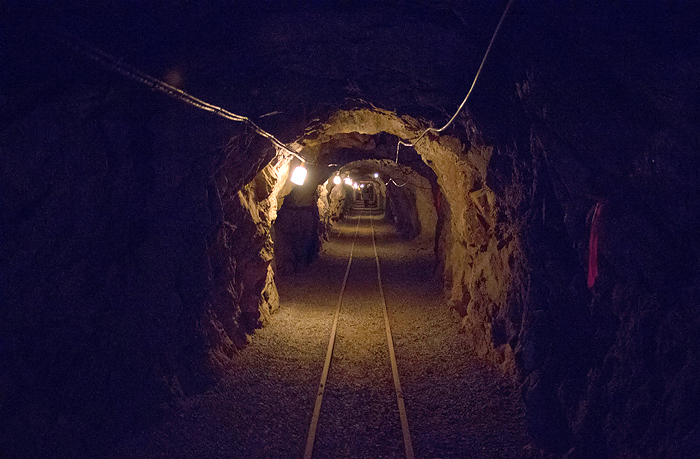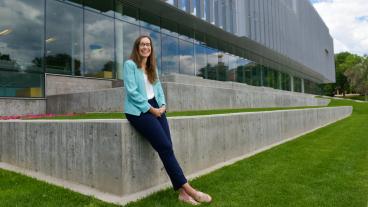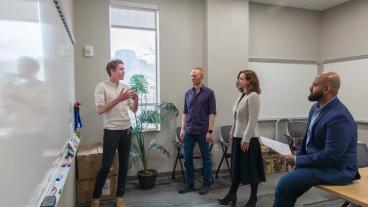
Colorado School of Mines underground classroom, the Edgar Experimental Mine. Photo: Agata Bugucka
While the U.S. continues to look for new energy sources, our reliance on mining for rare minerals grows. Unfortunately, miners often work in dangerous environments where there is a risk of mine explosions, fire, poisonous gases and flooding in tunnels. Mine accidents have killed over 40,000 mine workers worldwide in the past decade.
Mine safety demands a scalable, low-cost solution to enable sensing, communication and tracking in underground mines to detect precursors to emergencies and to aid rescue efforts in the aftermath of an accident. In spite of requirements for data and voice communications in underground mining growing significantly, the high cost of deploying a safety infrastructure often leads to companies only meeting the minimum required safeguards.
The National Science Foundation awarded a three-year $750,000 grant to the project, “Enabling Smart Underground Mining with an Integrated Context-Aware Wireless  Cyber-Physical Framework,” in order to solve this problem. About $338,000 will go to Colorado School of Mines researchers, led by Computer Science Associate Professor Qi Han, in collaboration with Carl Brackpool, a research associate in the Department of Mining Engineering. Han shares in the grant with fellow CS researchers at Colorado State University.
Cyber-Physical Framework,” in order to solve this problem. About $338,000 will go to Colorado School of Mines researchers, led by Computer Science Associate Professor Qi Han, in collaboration with Carl Brackpool, a research associate in the Department of Mining Engineering. Han shares in the grant with fellow CS researchers at Colorado State University.
“I’ve been passionate about using my research expertise to improve mine safety for quite some time, so it’s very exciting that the NSF has chosen to support this research,” said Han. “I’m most interested in designing algorithms to support the co-existence of high quality voice streams in noisy underground environments. Providing voice streaming support will significantly improve situational awareness.”
The project will devise, design, prototype and test a fundamentally novel framework of low-cost, energy-efficient and reliable sensor nodes and commodity smartphones to improve safety in underground mines. The wireless cyber-physical framework would bypass GPS, cellular and other signals that we take for granted above ground.
The researchers will field-test their system in Colorado School of Mines’ Edgar Mine, used for research and education. They also will partner with Hecla Mining in Idaho, which has expressed interest in the proposed technology.
While useful for mining, the technology could lead to a host of other applications in the realm of next-generation smart workplaces and various “Internet of Things” applications. It could also be used in the aftermath of disasters for survivor rescue efforts.
CONTACT:
Deirdre Keating, Communications Manager, College of Engineering & Computational Sciences | 303-384-2358 | dkeating@mines.edu
Ashley Spurgeon, Editorial Assistant, Mines magazine | 303-273-3959 | aspurgeon@mines.edu



